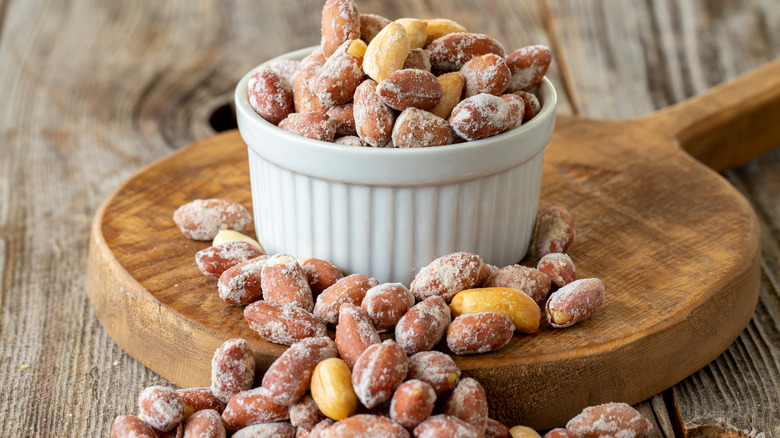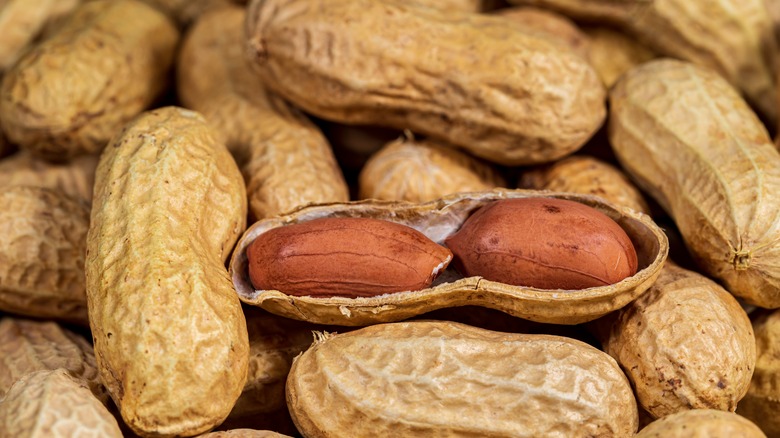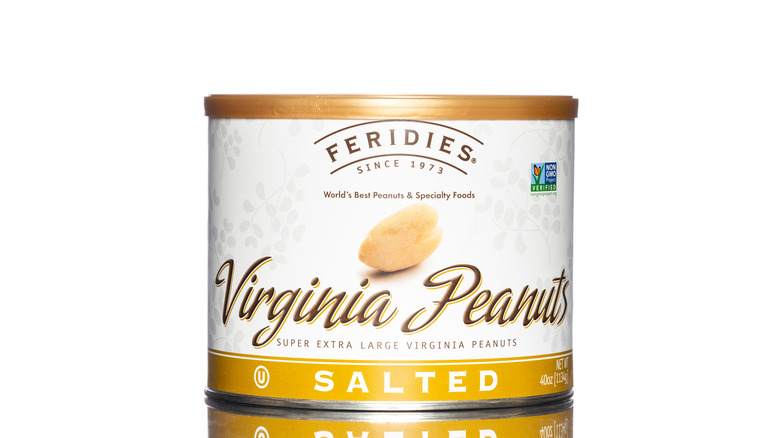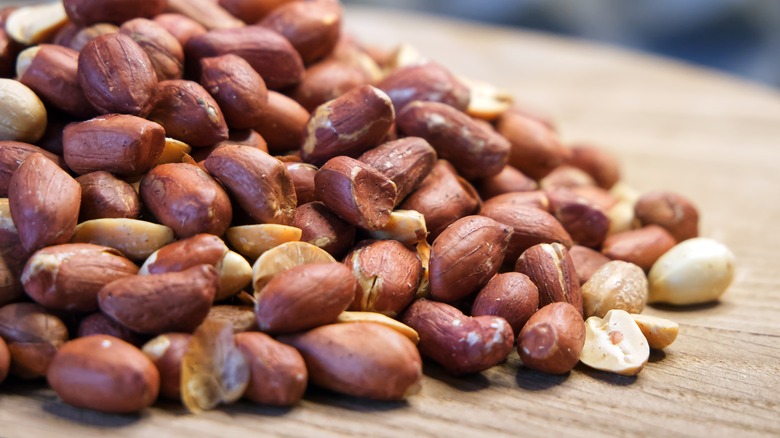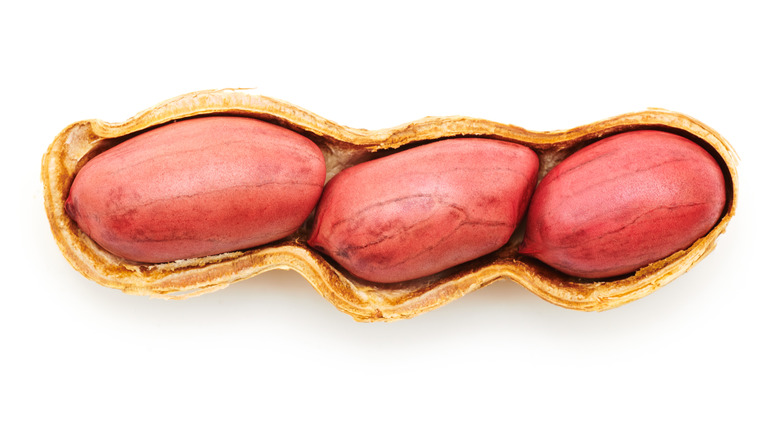The 4 Primary Types Of Peanuts, Explained
Isn't it great when something that tastes delicious is actually good for you? If you love to snack on peanuts, you're in luck. According to WebMD, peanuts benefit your health, thanks to their high fiber content, protein, and host of "good fats." These attributes may reduce the risk of heart disease, blood clots, cancer, and inflammation. Peanuts are even helpful when trying to lose weight since they won't take too many to fill you up. Americans love them in the form of peanut butter, bought by the salty bagful at a baseball game, and in the south, you'll even find peanut lovers putting peanuts in their coke. Yep, it's a thing.
Did you know peanuts aren't technically a nut? They're a part of the legume family, just as peas and beans are, although a peanut's texture and taste tend to lump it in with nuts. Either way, peanuts are a healthy snack, and some varieties work well in cooking as well. Mainly, peanuts are eaten on their own after being dry-roasted or boiled, and they are also often ground into peanut butter or pressed for peanut oil. There are four types of peanuts, and each has its own benefits.
Runner peanuts
The most common type of peanut in the US is the runner peanut, accounting for a whopping 80% of peanut production. The reason is that they grow well and bring a high yield but are still tasty, making them a great choice for farming. However, runner peanuts won't grow well just anywhere. If you live in a northern state with cold winters, you likely won't do well trying to garden or farm runner peanuts. They prefer warm weather and sandy, well-drained soil, which makes states like Texas, Oklahoma, Georgia, Alabama, and Florida excellent regions for this type of peanut. They also have a consistent shape and size, which is helpful in the candy and peanut butter industries, and of course, are great for snacking.
The runner peanut stays busy in the US since peanut butter is the number one use of all peanuts, and you need about 850 peanuts just to make one 18-ounce jar of peanut butter. You may never look at your jar of peanut butter the same.
Virginia peanuts
If you prefer to feel fancy when snacking, grab some Virginia peanuts. They're considered the "gourmet" of all peanuts and even have to pass specific grades in color and size to make the cut. They're, of course, mainly grown in Virginia, but also in the Carolinas, and recently farmers have begun growing Virginia peanuts in Florida, Georgia, Oklahoma, Texas, and New Mexico. Still, the Virginia peanut only accounts for about 15% of all US peanuts.
Those who know peanuts well feel it would be a travesty to grind the beautiful Virginia peanut into peanut butter since they have a lovely round shape and are larger than most other peanuts. These are the ones you might find in a bag of peanuts at the ballpark and are even nicknamed the "Ballpark Peanut" (via Feridies). When opening up a peanut in a shell, consumers expect a good-sized peanut they can crunch into, and the Virginia delivers.
Spanish peanuts
Spanish peanuts originated, as you might imagine, in Spain in the 1700s, and today, although grown in the US, they only account for about 2% of all peanuts grown in America. They prefer the western climates and almost all Spanish peanuts in the US are grown in Texas, Oklahoma, or New Mexico.
Spanish peanuts are the smallest in size of all peanuts, and you may recognize them as the nut with reddish-colored skin. You'll also find Spanish peanuts in many candies that require nuts, thanks to their small size and sweet flavor. However, they can be used in peanut butter as well — though not as often as the Runner.
Another use for these peanuts is peanut oil, which is a popular cooking oil that handles high temperatures and adds a slightly nutty flavor to food, and Spanish peanuts are an excellent option when choosing peanuts to crush for oil. Out of all the peanut varieties, the Spanish peanut has the highest oil content.
Valencia peanut
One of the unique things about the Valencia peanut is that, unlike other peanuts with two kernels per shell, they have 3 to 6 red-skinned kernels form inside the shell. Although they originated in South America, Valencia peanuts are now grown in the United States in New Mexico and Texas. Gardening Know How writes that they are the least common peanut in the US and only account for about 1% of all peanut growing.
Valencias aren't often used to make peanut butter unless it's all-natural peanut butter. They tend to be the sweetest of all peanuts, which is helpful for those who want less added sugar in their peanut butter. As a snack, they are usually preferred boiled, and again, their sweetness makes Valencia peanuts an excellent snack choice.
Just like all peanuts, Valencia peanuts are a healthy choice. They contain the same fiber and protein as all peanuts, as well as folate, vitamin E, arginine, and magnesium, which are all heart-healthy.
